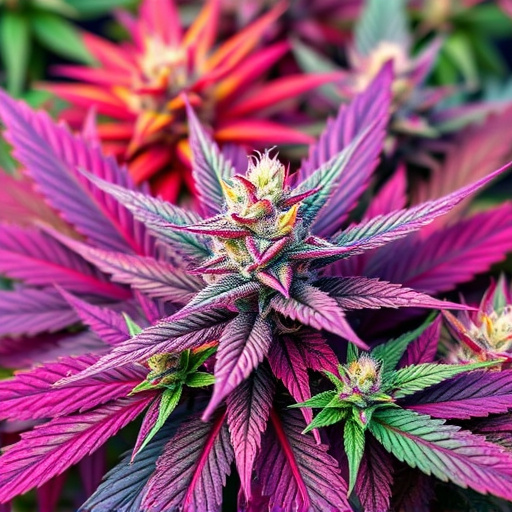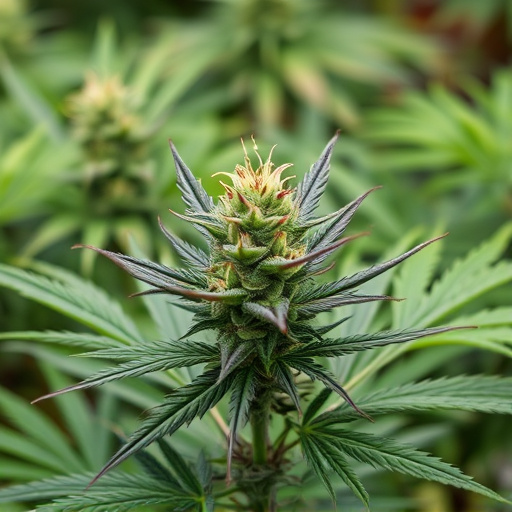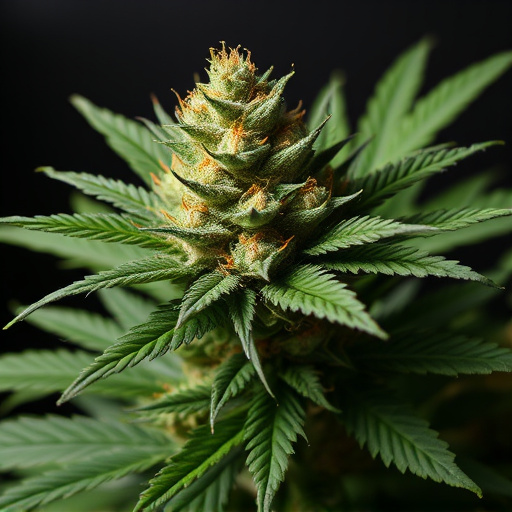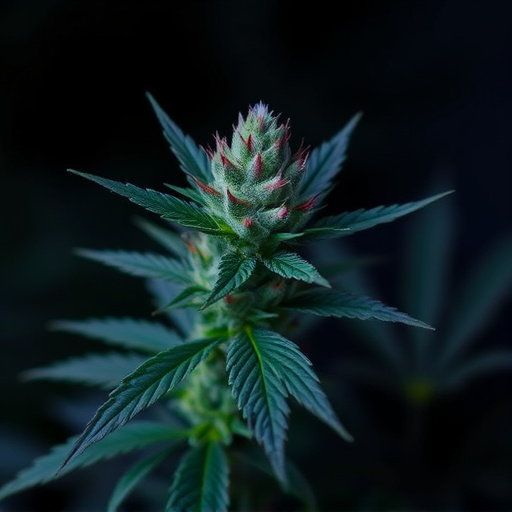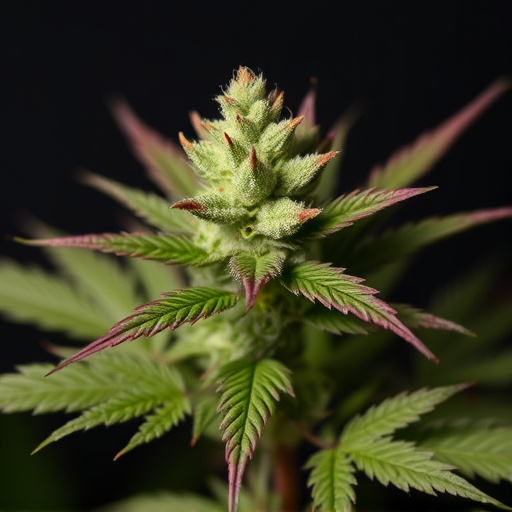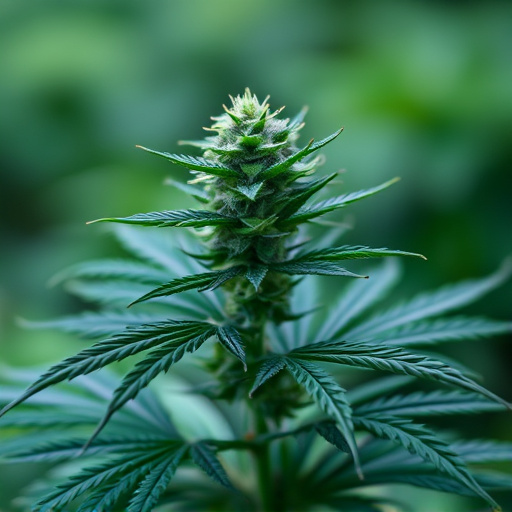THC in cannabis interacts with the body's endocannabinoid system to influence symptoms like pain and mood, offering potential relief for conditions like fibromyalgia. High-CBD, low-THC strains are effective in reducing pain and inflammation, while THC-rich strains can stimulate appetite. For fibromyalgia management, a balanced approach using Indica-dominant varieties with high THC and moderate CBD is recommended, with popular choices like Granddaddy Purple, Girl Scout Cookies, and Blue Dream offering optimal benefits.
“Unraveling the impact of tetrahydrocannabinol (THC) on hunger hormones is a fascinating aspect of cannabis research. This compound, pivotal in the endocannabinoid system, plays a surprising role in regulating appetite. We explore how THC interacts with our body’s natural mechanisms to control food intake, offering insights that can benefit fibromyalgia patients.
In this comprehensive guide, we delve into specific cannabis strains renowned for their potential to alleviate symptoms, focusing on THC content as a key factor for managing pain and hunger.”
- Understanding THC and Its Interaction with the Endocannabinoid System
- The Role of THC in Regulating Appetite and Hunger Hormones
- Best Cannabis Strains for Fibromyalgia Patients: Consideration of THC Content
Understanding THC and Its Interaction with the Endocannabinoid System
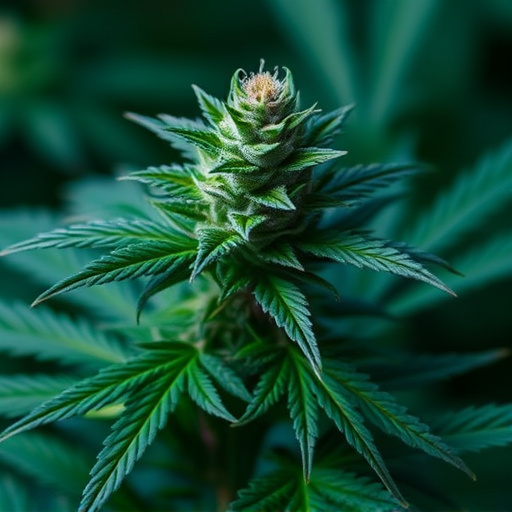
THC, or tetrahydrocannabinol, is the primary psychoactive compound found in cannabis and is responsible for its distinct effects on the body and mind. Its interaction with the endocannabinoid system (ECS) has been a subject of intense scientific interest. The ECS is a complex network of receptors and endo-cannabinoids that regulate various physiological processes, including appetite, pain sensation, and mood. When THC binds to specific receptors in the ECS, such as CB1 and CB2, it can modulate these processes, leading to a range of effects.
In the context of conditions like fibromyalgia, where chronic pain and inflammation are prevalent, understanding how THC interacts with the ECS is crucial. Research suggests that certain best cannabis strains for fibromyalgia may offer symptom relief by engaging the endocannabinoid system. For instance, strains high in CBD (cannabidiol), a non-psychoactive compound, have shown promise in reducing pain and inflammation without inducing the psychoactive effects associated with THC. This highlights the potential of cannabis as a therapeutic tool, offering both short-term relief and long-term management for conditions like fibromyalgia.
The Role of THC in Regulating Appetite and Hunger Hormones
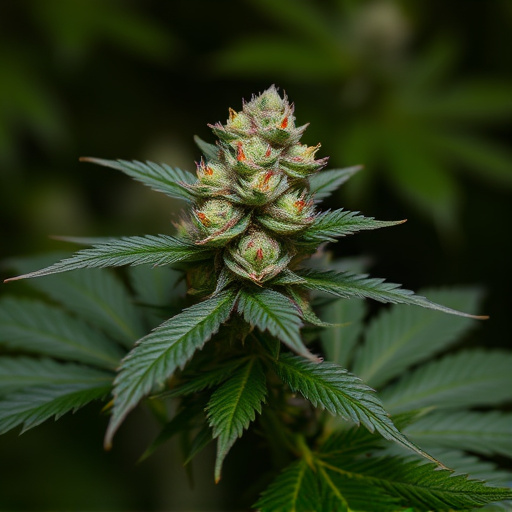
THC, the primary psychoactive compound in cannabis, plays a surprising role in regulating appetite and hunger hormones. While often associated with increased hunger, known as “the munchies,” research suggests that THC’s effects on appetite are complex and multifaceted. It interacts with various neurotransmitters and receptors in the brain, including those involved in hunger signals, satiety, and food reward. This interaction can lead to both increases and decreases in appetite depending on individual factors and dosage.
For individuals seeking relief from conditions like fibromyalgia, certain cannabis strains known for their high THC content can be beneficial. Best cannabis strains for fibromyalgia often include hybrids with potent THC levels that can help manage pain and stimulate appetite. These strains may alleviate symptoms by affecting endocannabinoid receptors in the body, which are part of the system responsible for regulating hunger and perception of pain. Understanding how THC influences these hormones offers valuable insights into the potential therapeutic applications of cannabis for various medical conditions.
Best Cannabis Strains for Fibromyalgia Patients: Consideration of THC Content
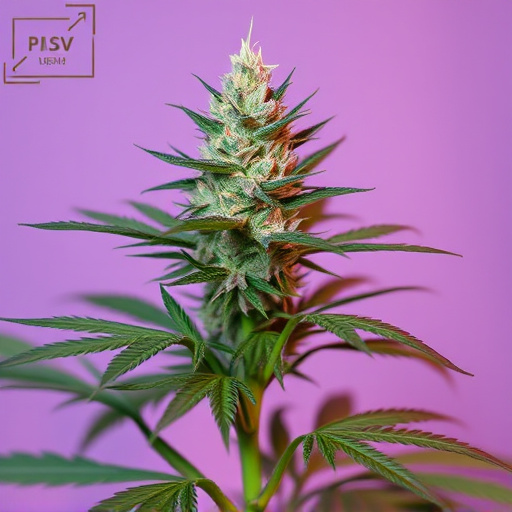
When choosing the best cannabis strains for fibromyalgia patients, it’s crucial to consider the THC content alongside other factors such as CBD levels and strain-specific effects. THC (tetrahydrocannabinol), the primary psychoactive compound in cannabis, has been shown to interact with endocannabinoid receptors in the body, potentially alleviating pain and reducing inflammation—key symptoms for those living with fibromyalgia. Strains with higher THC concentrations may offer stronger analgesic and anti-inflammatory effects, but it’s essential to balance this with individual tolerance and desired effects.
Among the best cannabis strains for fibromyalgia patients are those known for their balanced profiles. Indica strains, in particular, tend to have sedative properties that can promote relaxation and sleep quality, both of which are frequently compromised in individuals with fibromyalgia. Popular choices include strains like Granddaddy Purple, Girl Scout Cookies, and Blue Dream, renowned for their high THC content while maintaining a manageable level of CBD. These strains can help patients manage pain, reduce muscle spasms, and improve overall well-being.
THC’s impact on hunger hormones offers a promising avenue for managing conditions like fibromyalgia, where appetite regulation can significantly improve quality of life. As we’ve explored, understanding its interaction with the endocannabinoid system reveals why THC can stimulate appetite and influence key hormones. When considering the best cannabis strains for fibromyalgia patients, selecting varieties with balanced or moderate THC levels can provide therapeutic benefits while minimizing adverse effects. Further research is essential to unlock the full potential of this natural compound in treating various conditions.




